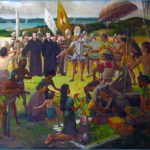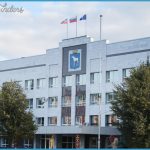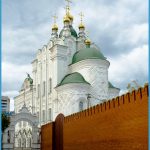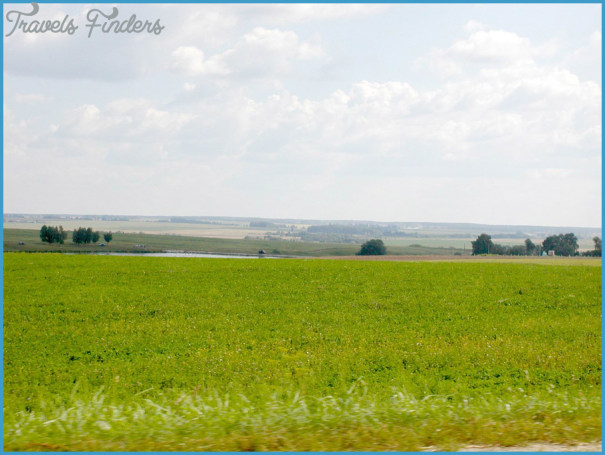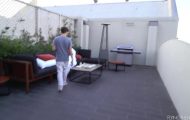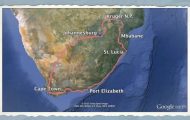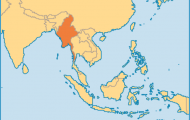KLYUCHNIKOV-PALANTAY MUSEUM
Ivan Stepanovich Klyuchnikov-Palantay was born in 1886 in the village of Kokshamari, near Zvenigovo in the Mariy El Republic of Russia, some 600 km east of Moscow. He is commemorated in a museum in Yoshkar-Ola, the Mariy capital. As a child, he learnt to play the concertina and the kusle, a local folk zither. He later studied music in Kazan, and after a period of political exile obtained work as a choir director in the Urals. After the Revolution he returned to his native region, working in Krasnokokshaysk, where he taught, conducted, collected and arranged Mariy folksongs, which much influenced his own compositions. In 1924 he had a brief period of study at the Moscow State Conservatory, but he soon returned to Krasnokokshaysk and then moved to Yoshkar-Ola, where he died in 1926.
KLYUCHNIKOV-PALANTAY MUSEUM Photo Gallery
Klyuchnikov-Palantay, whose political activities led to his being highly regarded in the Soviet era, was admired for his choral conducting, his folksong research (he published several collections of Mariy music) and his educational work; he was a key figure in the establishment of a Mariy musical culture and was dubbed the Mariy nightingale’. There is a monument to him in the village of his birth and a street and a music school in Yoshkar-Ola are named after him. His house there in Leo Tolstoy Street, a wooden, single-storey building, was opened as a museum in 1961, on the 75th anniversary of his birth. There are three rooms, the parlour, his study and the children’s room, which have been reconstructed and restored to their condition during his years there. The displays include photographs, concert programmes and other material referring to his musical activities as well as various personal items. The parlour, with his upright piano, is used for small-scale musical events. Zoltan Kodaly lived for more than 46 years in a mezzanine flat in central Budapest, in Andrassy ut, a fine boulevard in Pest with some splendid buildings (among them the Opera), in the north-east quadrant of a large roundabout now called Kodaly Korond (Kodaly Circle). He moved there in October 1924 and remained there for the rest of his life. He died in March 1967. His widow, Sarolta Peczely Kodaly, presented the flat and its contents to the International Kodaly Society, acquired the adjacent flat and equipped it elegantly as an archive Rights were not granted to include these illustrations in electronic media, Please refer to print publication The Kodaly Archives in Budapest for her husband’s manuscripts, editions, writings and memorabilia, and in December 1989 opened the Zoltan Kodaly Memorial Museum and Archives.
The lower ground floor now offers a small recital room with a barrel-vaulted ceiling, seating 55, and a seminar room. The present contents of Kodaly’s four-room flat strongly reflect his lifelong interests in folk music and art, literature and photography. The dining-room, giving pride of place to his beloved folk ceramics, receives visitors today as it did in his own time. Through a doorway to the right is the salon, rather crowded (as it always was), with two grand pianos, numerous busts and portraits, a colourful array of rugs, embroidered chair covers, traditional furniture, rolltop music cabinets (no doubt still full of music) and more displays of ceramics. Here, as in his study, neatly lined bookcases reach to the ceiling, requiring a library ladder for access to the upper shelves; in addition to books on music history and ethnography, the browser will encounter a rich trove of European literature and literary history. The hand-carved desk in his atmospheric study closely resembles that of his friend Bela Bartok, made by the same designer from Transylvania. Today the former bedroom serves as a showcase for Kodaly’s manuscripts in changing exhibitions in the tall modern display cases (one, devised by Ferenc Bonis, entitled A Look into the Workshop’, showed his music at various stages from sketch to final publication). Also on display are his writing implements, glasses, camera, field photographs and notebooks and his phonograph and cylinders.
Kodaly’s flat is within easy walking distance of the Academy of Music, where he taught composition from 1908, when he was 27, to 1942. By the time he moved there he had been married for 14 years to a former composition pupil, Emma Sandor; in 1959, after her death, he married Sarolta. The flat served as a mecca for pupils and professional musicians. Although the wide popularity of some of his works prompted a new career in conducting, and brought in commissions from far afield, his life remained firmly centred on Budapest, Hungarian music and, from the mid-1920s, music education.
During both world wars Kodaly remained in Budapest, taking refuge at different times during the second in a Budapest convent and in the opera house. In the 1940s he was actively involved in the Academy of Sciences, editing its folk music collection and serving as its president from 1945 to 1949. Kodaly pilgrims will want to seek out the reclining statue of the composer by Imre Varga, erected in the Europapark (on the western slope of Castle Hill, jss the river in Buda) to mark the centenary of his birth. It seems apt that this passionate educationist should sit there as children play about him. In Kecskemet, 86 km south-east of Budapest, where he was born in 1882, his birthday is celebrated each year with concerts and a choral festival. Since 1975 it has been the home of the Zoltan Kodaly Music Pedagogical Institute.

